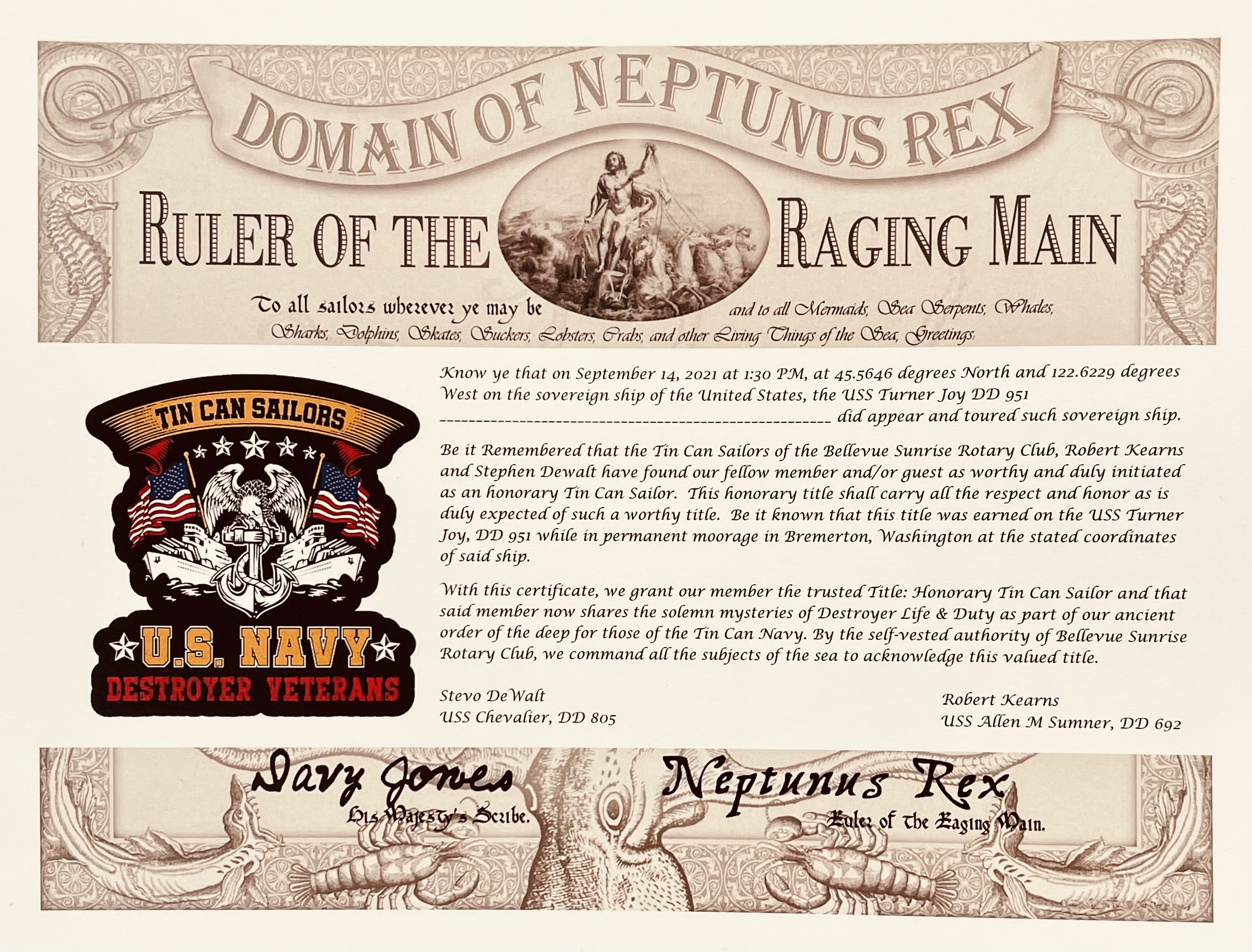Tour of USS Turner Joy (DD-951)
Esse Quam Videri
(To be rather than to seem)
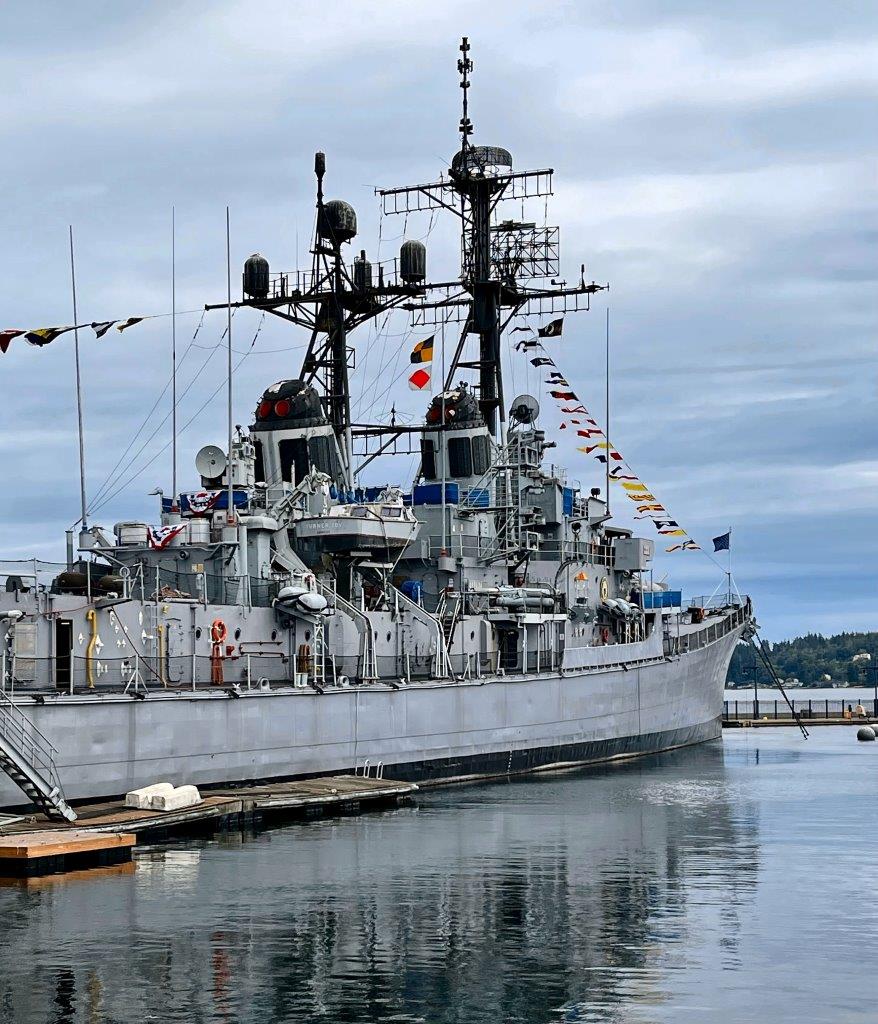
Captain Greg Piantanida and trusty Rotary crew sailed from Seattle to Bremerton via the Hiram Chittenden locks in Ballard to visit the famous fighting ship of the war in Vietnam.
Through the Locks
A contingent of Bellevue Sunrise Rotary Club members, spouses and friends toured the museum ship USS Turner Joy, DD 951 in early September 2021 as part of an all-day social event. Past President Greg Piantanida graciously transported ten of the group on his beautiful boat, Maui Chips, to and from Bremerton, where Turner Joy is moored. It was a great day to be on the water as we neared the end of the prime boating season. The weather held, the Sound was relatively calm and spirits were high. The trip included transit of the Hiram Chittenden locks in Ballard, both outbound and inbound.
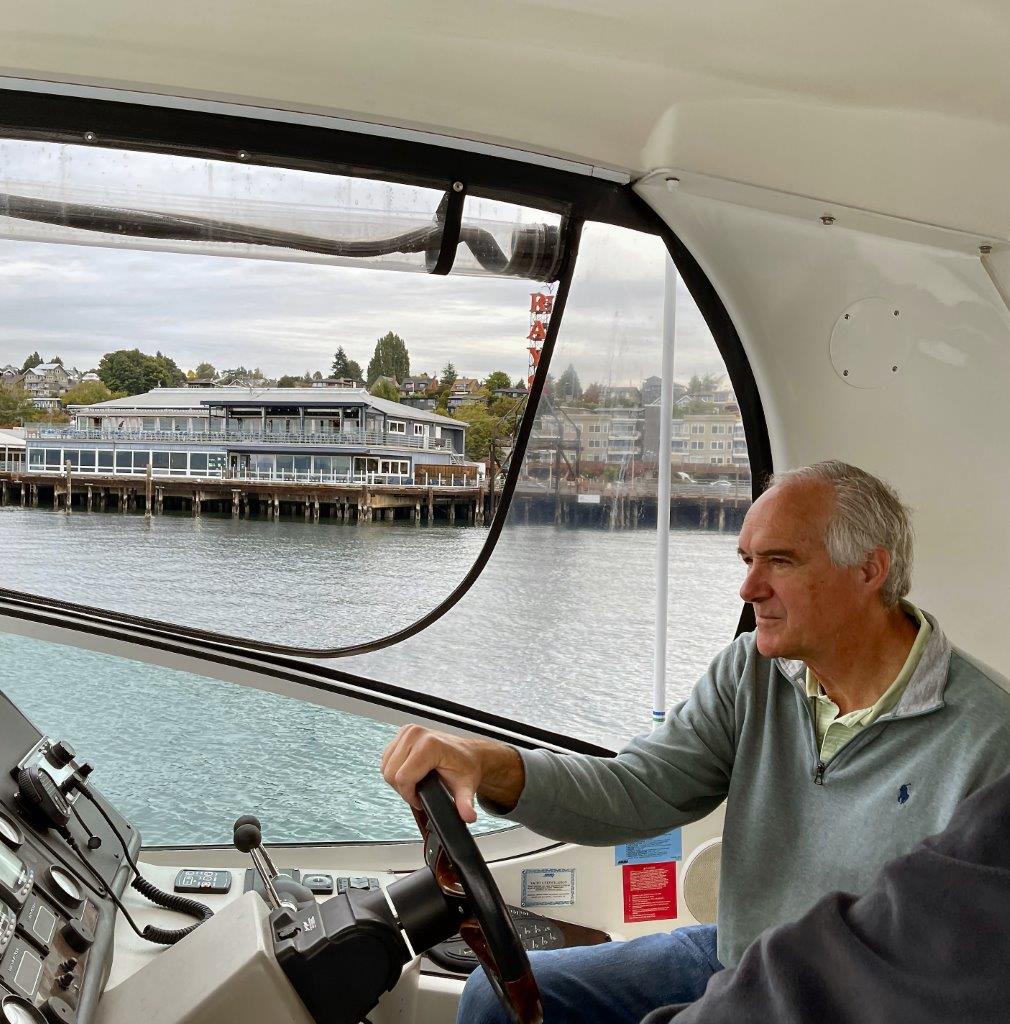
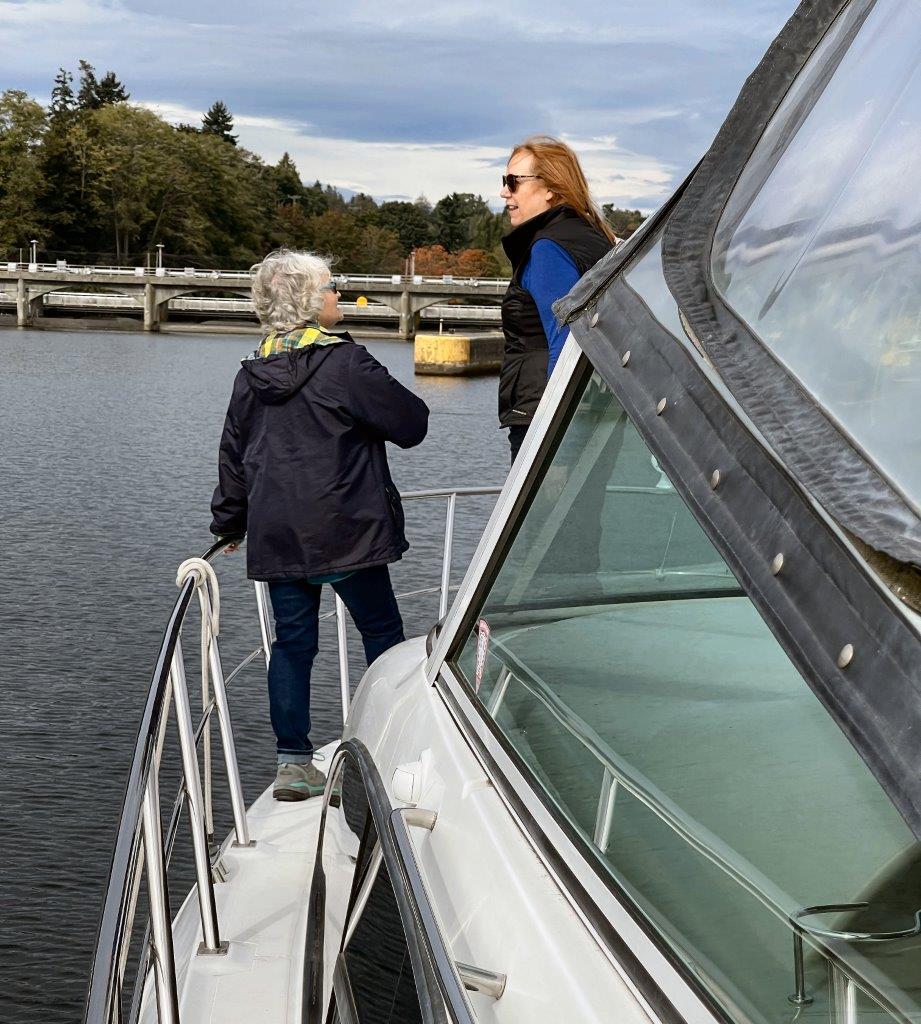
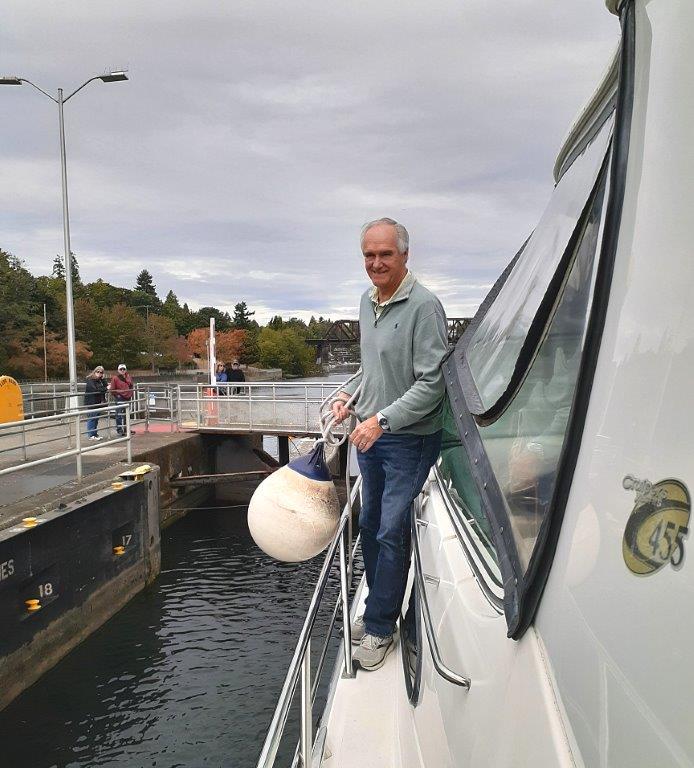
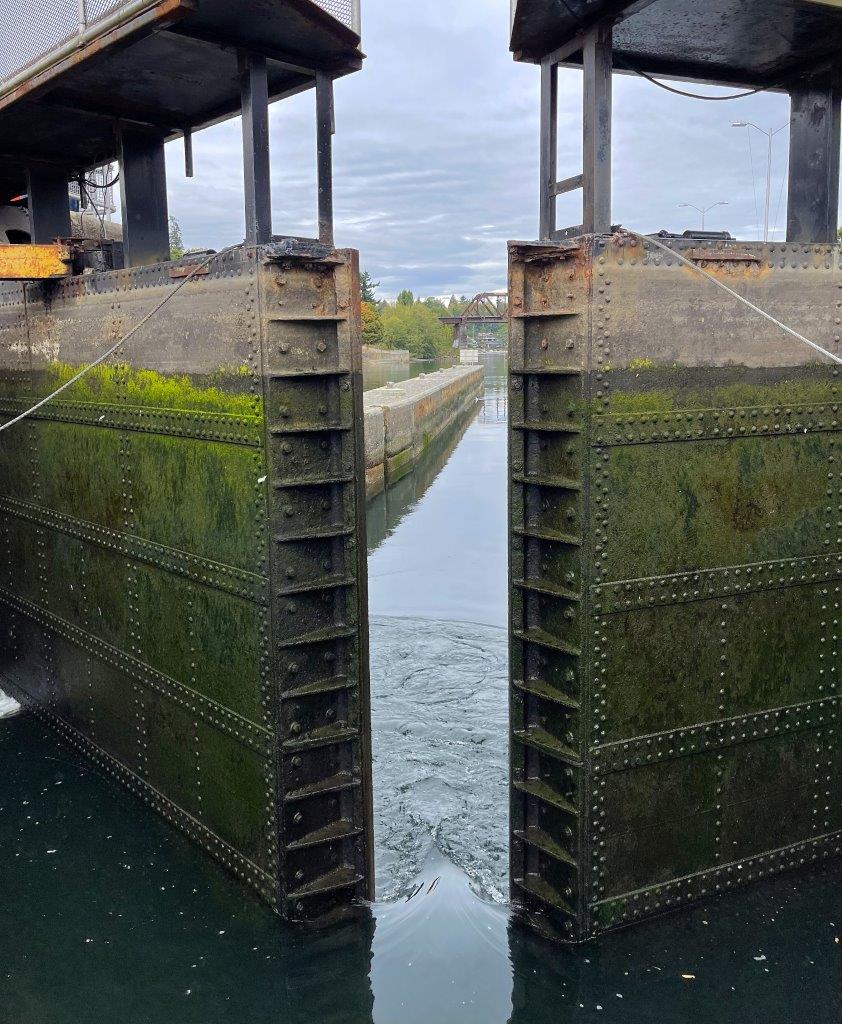
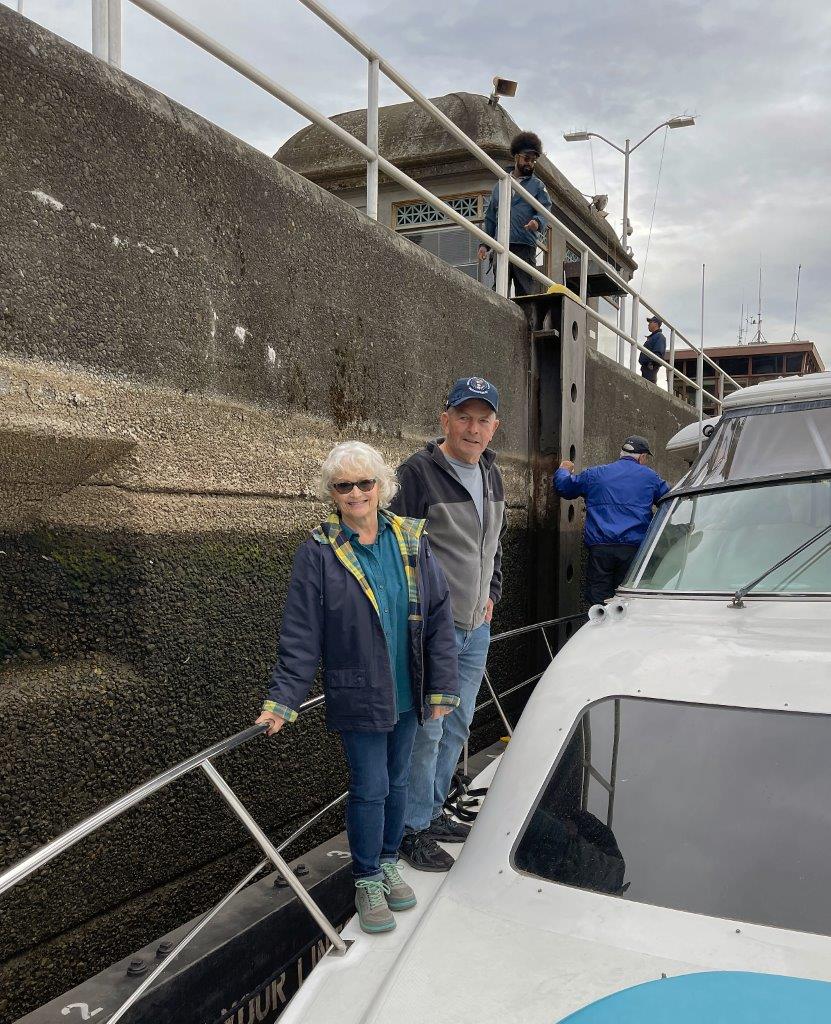
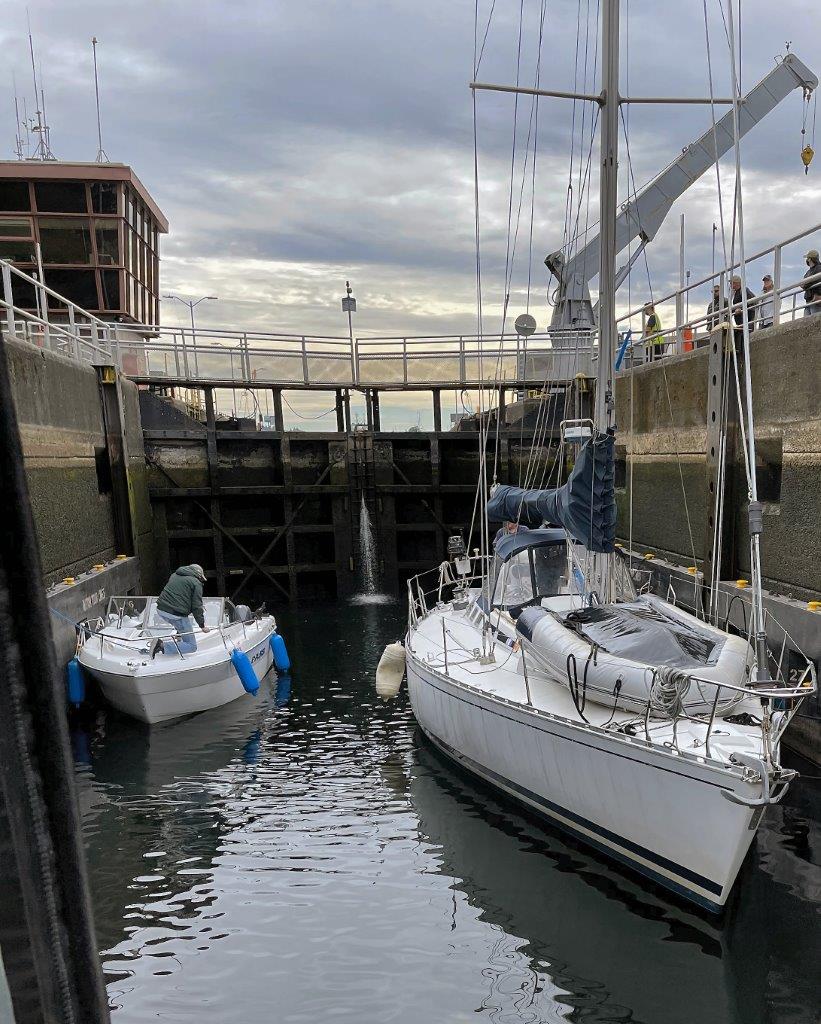
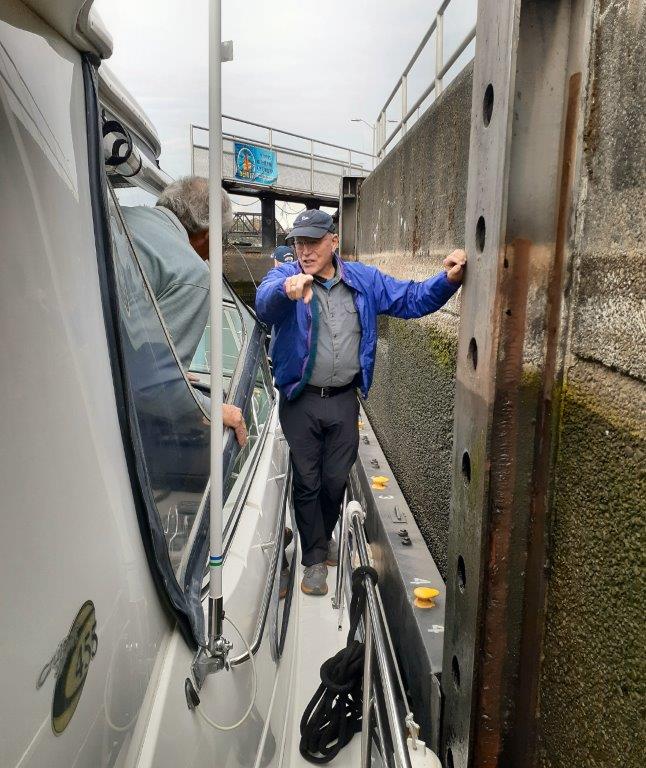

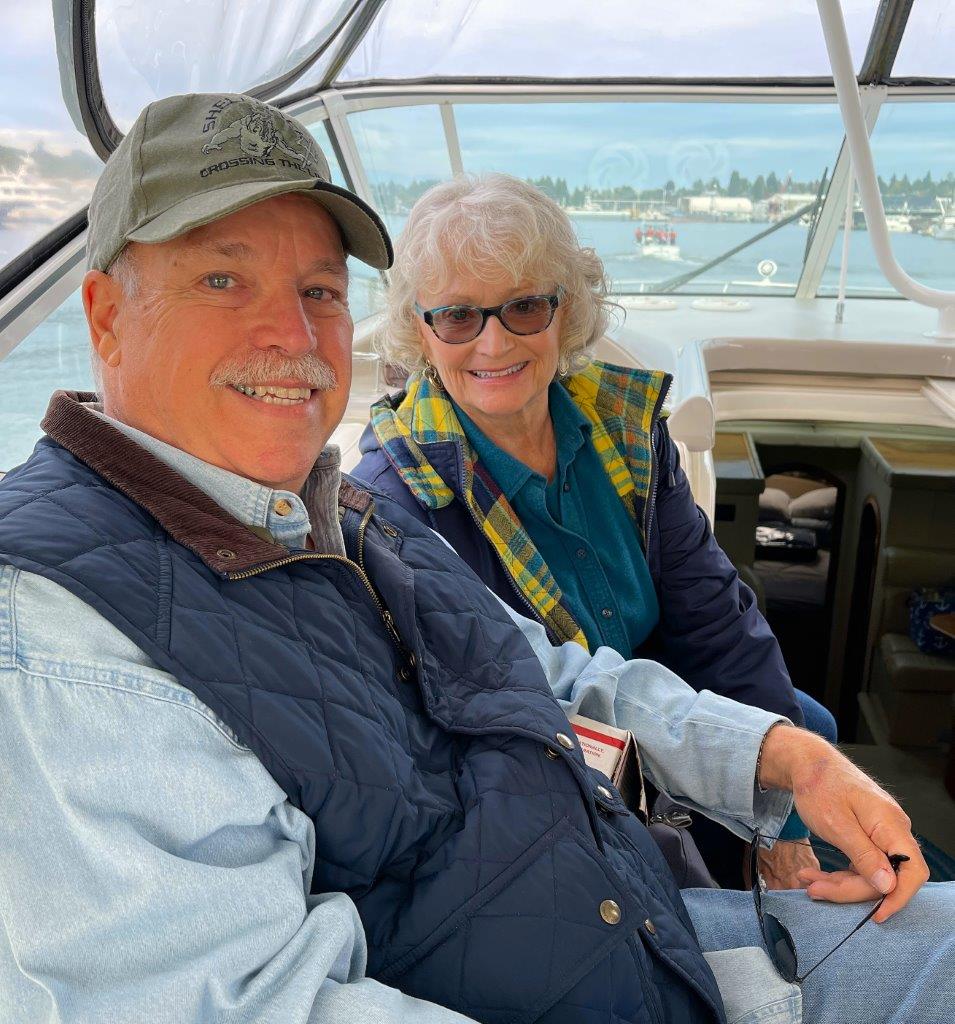
On the Sound
A congenial time was had by all as we cruised the soothing waters of Puget Sound, which served to rinse the cares of the world from our minds. Even if the waters had run a little rough, the old expression about the golf course would have come to mind: “A bad day on the Sound is far better than a good day at work.” [Fortunately, the Sound blessed us with calm the entire journey.] Bellevue Sunrise Rotarians work hard to fulfill their club’s obligations to community, and love to socialize with their club family whenever possible.
Arriving Bremerton
It took about two hours to transit from the locks at Ballard into the port of Bremerton. Maui Chips was tied up to the downtown marina adjacent to the moorage of the Turner Joy, and Bellevue Sunrise Rotary visitors made their way into town for a brief lunch before the start of their tour of the Turner Joy.
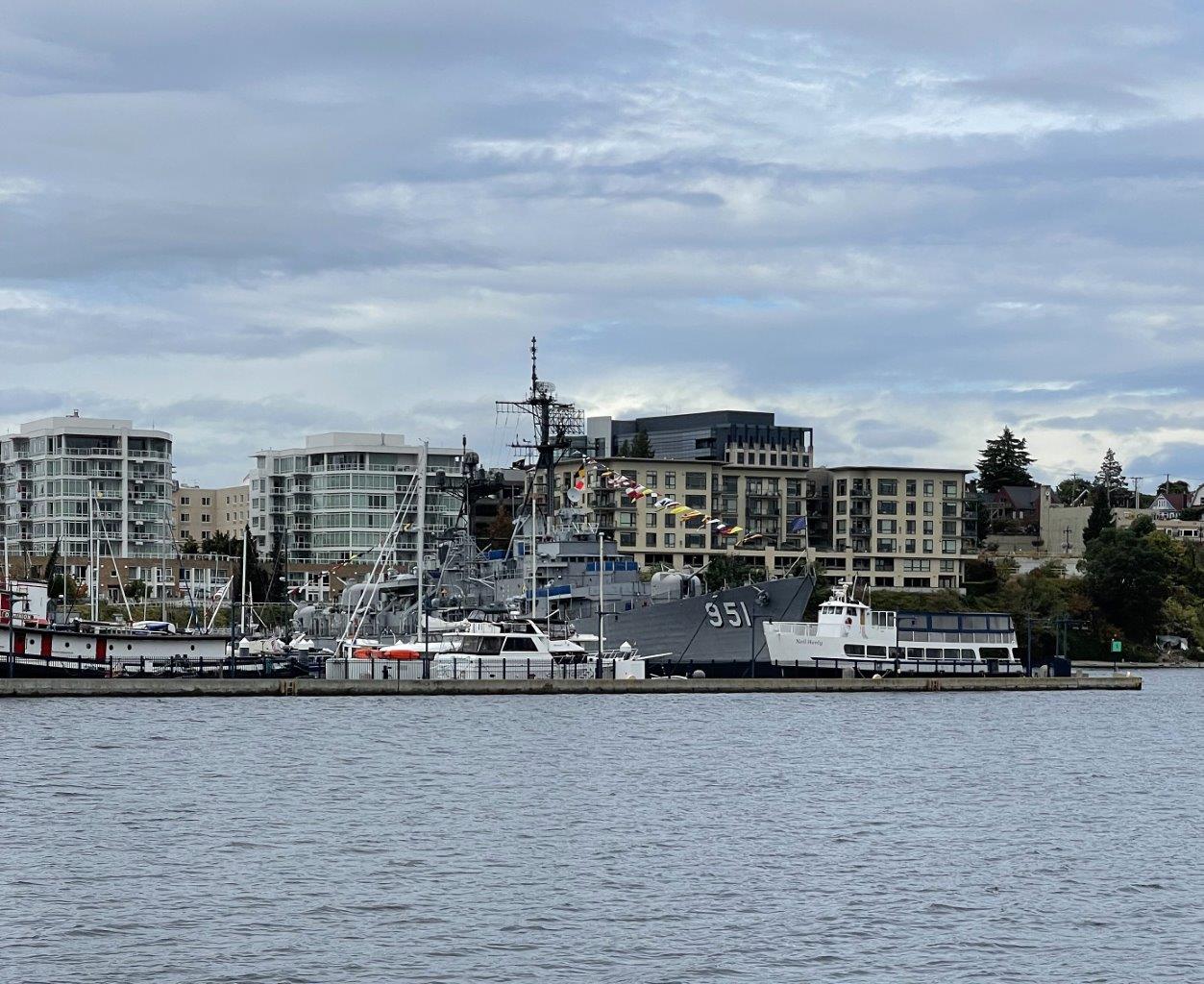
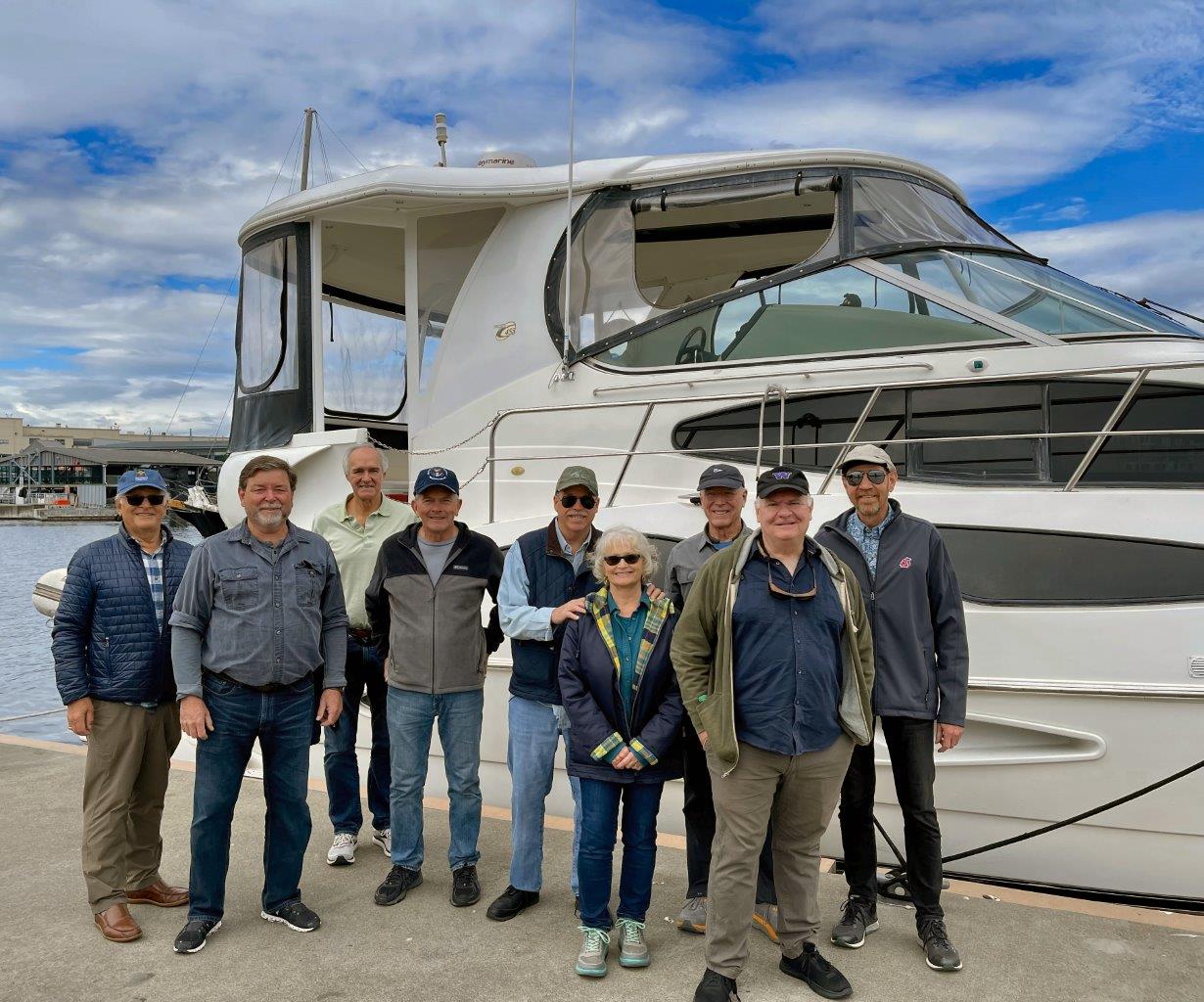
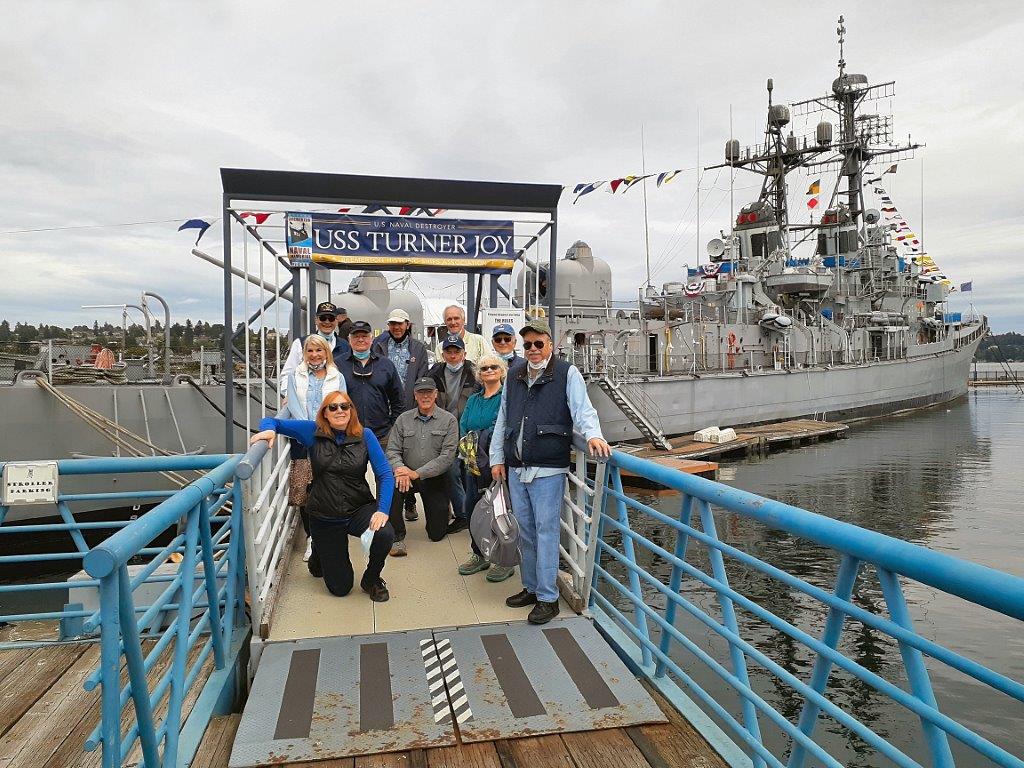
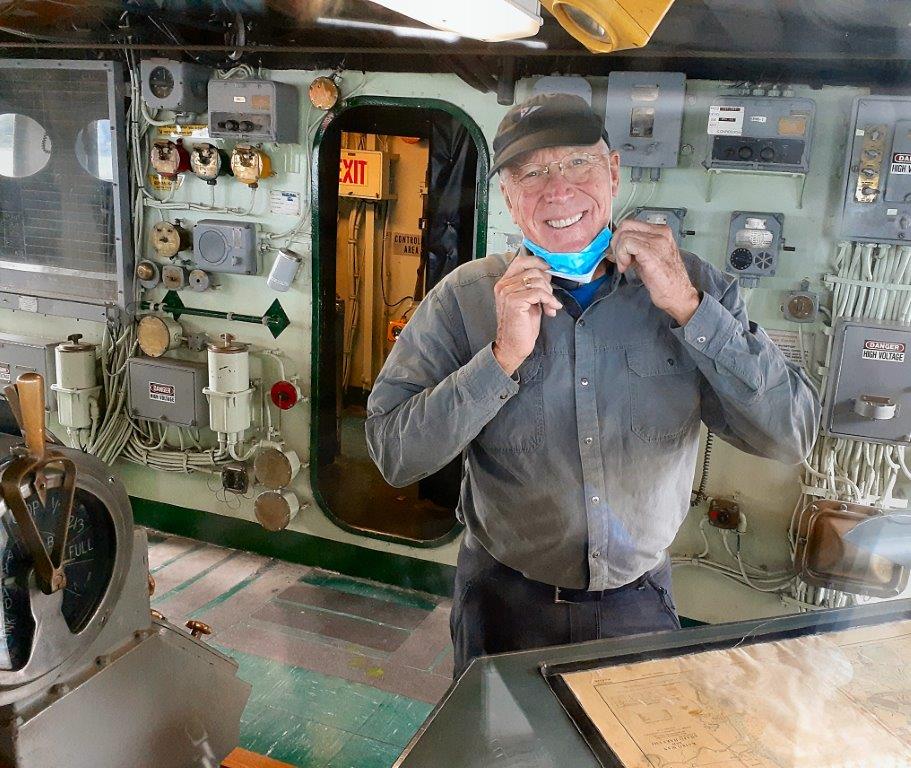
The Tour
A comprehensive tour of the Turner Joy was fascinating, as volunteer former sailor guides took the group up and down ship ladders into spaces the general public rarely has a chance to see. From the propeller shafts’ alleys up to the pilot house, the guides held the group’s rapt attention with their expert descriptions of naval engineering, gunnery and communications. This immersive experience truly illustrated the prowess of the US Navy at a pivotal point in the Nation’s history. At the end, many in the group proclaimed they wanted to do the tour again the following year!
The Turner Joy is one of 18 Forrest Sherman-class destroyers of the United States Navy. She was named for Admiral Charles Turner Joy USN (1895–1956). Commissioned in 1959, she spent her entire career in the Pacific. She participated extensively in the Vietnam War, and was one of the principal ships involved in the Gulf of Tonkin Incident. Decommissioned in 1982, Turner Joy is now a museum ship in Bremerton, Washington.
The Gulf of Tonkin incident, which prompted American retaliation, is described in Wikipedia: In the afternoon of 2 August 1964, USS Maddox, DD 731 engaged in a DESOTO patrol, called for assistance when three Vietnam People’s Navy (VPN) P 4-class torpedo boats from the 135th Torpedo Squadron attacked her. As Maddox engaged the boats, firing over 280 five-inch shells, the contact was broken, and each combatant withdrew from the contact. While retreating to the North Vietnamese coastline, the three torpedo boats were attacked by four Navy F-8 Crusader jets from Ticonderoga which fired rockets and strafed with 20mm cannon fire, damaging two torpedo boats and leaving one boat in apparently sinking condition. Meanwhile, Turner Joy raced to Maddox to provide additional surface strength. By the time she reached Maddox, the torpedo boats were no longer in the area.
On 3 August 1964, the Turner Joy was ordered to accompany the Maddox for another DESOTO mission on 4 August. Turner Joy’s radar screens picked up a number of what appeared to be small, high-speed surface craft approaching, but at extreme range. As a precaution, the two destroyers called upon Ticonderoga to furnish air support. By nightfall, the unidentified radar echoes suggested that VPN torpedo boats were converging upon the two American warships from the west and south. Turner Joy reported that she sighted one or two torpedo wakes, then rang up full speed, maneuvered radically to evade expected torpedoes, and began firing in the direction of the unidentified blips. Over the next two and a half hours, Turner Joy fired approximately 220 five-inch shells, while planes from Ticonderoga fired at the supposed torpedo boats.
Reports claimed that at least two of those were sunk by direct hits and another pair severely damaged, and that the remaining boats retired rapidly to the north. A sailor in the Gunfire Director on the USS Maddox, Patrick Park, reviewed radar and sonar records for the next three days after the incident on orders from his superiors. His conclusion: There were no attacks on 4 August 1964 against the Maddox and the Turner Joy. This has been supported by evidence from the Vietnamese since the end of hostilities. In addition, Admiral Moore reported on 7 August 1964 to Admiral Sharpe that “Freak weather effects on radar and overeager sonar men may have accounted for the many reports."
Tin Can Sailor
In order to mark the day, each Bellevue Sunrise Rotary visitor to the Turner Joy was bestowed a certificate naming them an honorary “Tin Can Sailor.” [Tin cans are the Navy nickname for a US destroyer.] Before US Navy sailors cross the equator, they are referred to as pollywogs. The equator crossing is a major ceremonial event for sailors aboard a Navy ship; after their equator crossing, former pollywogs are then called Shellbacks, and receive a certificate much like the one below, to honor their rite of passage into Neptune’s realm.
